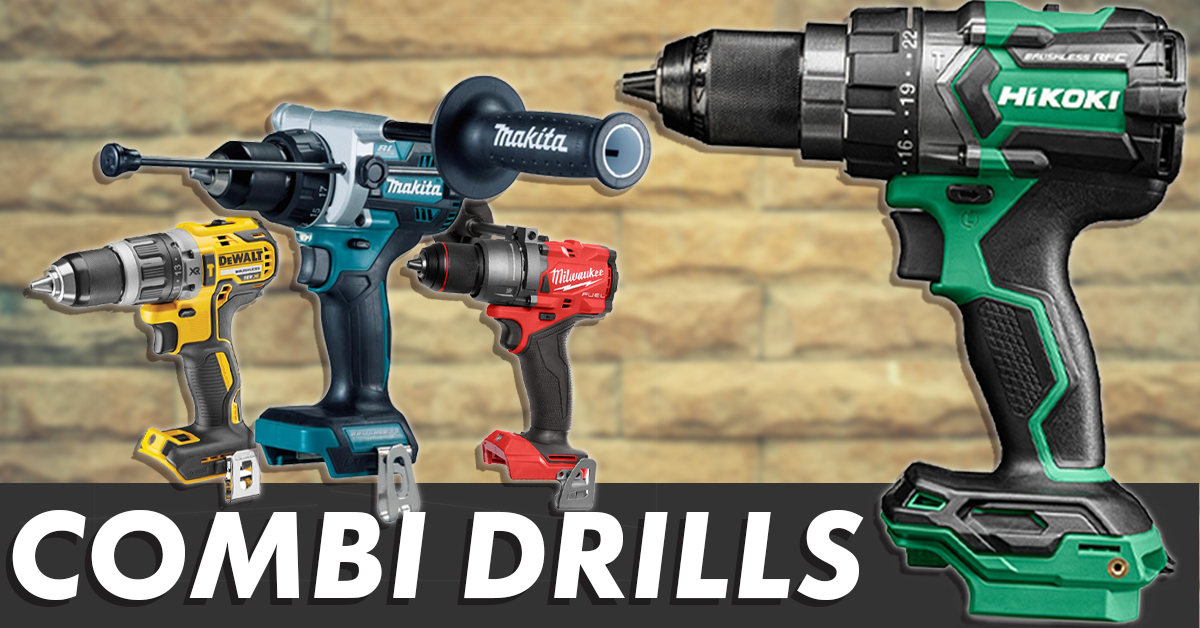Combi Drills
Combi drills combine the versatility of a drill driver with the power of a hammer drill, making them perfect for drilling into concrete, masonry, wood, and metal. Whether you're a tradesperson or a DIYer, combi drills are the go-to tool for a wide range of applications.

Watch Combi Drills in Action
Who Uses Combi Drills?
Combi drills are used by a wide range of professionals and DIY enthusiasts. Their versatility and power make them a staple for various tasks, from light-duty home projects to heavy-duty construction work.
- Construction Workers – Use combi drills for drilling into concrete and masonry with ease, thanks to the hammer mode.
- Electricians – Perfect for drilling through walls to run cables and install electrical fittings.
- Plumbers – Combi drills help plumbers drill holes in tough surfaces to install piping and fixtures.
- DIY Enthusiasts – Ideal for home projects, from drilling into wood and metal to handling more robust tasks.
How to Choose the Best Combi Drill
When selecting a combi drill, it’s essential to focus on specific features that will ensure you get the best tool for your needs, whether you’re tackling light home projects or more heavy-duty construction work. Below are the most important specifications to consider:
1. Power Options for Combi Drills
Corded Combi Drills: Best for continuous heavy-duty tasks where you don’t need to worry about battery life. Unlimited power makes corded combi drills ideal for long-term use. However, the cord can limit your mobility.
Cordless Combi Drills: Perfect for portability and convenience, especially on job sites. With modern battery technology, cordless drills offer power levels close to corded models but have limited battery life.
2. Choosing the Right Battery for Your Combi Drill
Ni-Cad Batteries: Reliable and affordable, but heavier and prone to the memory effect, which can degrade battery performance over time.
Lithium-Ion (Li-ion) Batteries: Lighter, more efficient, and longer-lasting than Ni-Cad. Li-ion batteries charge faster, making them ideal for professional use, but come at a higher cost.
3. Understanding Torque and Speed in Combi Drills
Torque: Higher torque is essential for heavy-duty tasks like driving long screws or drilling into masonry. Look for adjustable torque settings for more control.
Speed Settings: A combi drill with variable speed control allows switching between lower speeds (for more torque) and higher speeds (for faster drilling). For most jobs, a combi drill with 2-3 speed settings is versatile enough.
4. Hammer Functionality in Combi Drills
The hammer function makes the combi drill perfect for tough materials like concrete and brick. The drill produces short, sharp thrusts to break through these materials quickly and efficiently.
5. Combi Drill Chuck Sizes: What to Know
Most combi drills feature either a 13mm (1/2") or 10mm (3/8") chuck size. A larger chuck size allows for bigger drill bits, making the drill suitable for heavier tasks. For general use, a 13mm chuck offers the most flexibility.
6. Weight and Ergonomics in Combi Drills
Look for a well-balanced, lightweight combi drill with ergonomic grips for comfortable use over long periods. If working overhead or in tight spaces, a lightweight cordless drill can make a big difference.
7. Combi Drill Safety Features
Consider combi drills with safety features like brake stops (which halt the drill immediately when the trigger is released), LED lights for visibility, and overload protection to prevent overheating.
Popular Accessories for Combi Drills
Using the right accessories can help you get the most out of your combi drill. Whether you’re drilling through tough materials or keeping your workspace clean, these accessories can enhance your tool's performance and make your job easier.
1. Drill Bits
Drill bits are essential accessories for combi drills. With a variety of sizes and materials, from masonry bits for concrete to wood and metal bits, you can tailor your combi drill to suit any task.
2. Drill Dust Collectors
Drill dust collectors help maintain a clean workspace by capturing dust and debris while drilling. This accessory is particularly useful when working with masonry, drywall, or concrete, ensuring that harmful dust is minimized.
3. Batteries
Additional batteries ensure you won’t run out of power during critical jobs. With interchangeable batteries, you can always have a charged battery ready, maximising your efficiency and minimizing downtime.
Frequently Asked Questions
What are the benefits of a combi drill?
Combi drills offer the best of both worlds, combining the functions of a standard drill driver with the additional hammer mode for tough materials like masonry and concrete. They're versatile, making them perfect for a range of tasks from light-duty to heavy-duty jobs.
Corded or Cordless: Which is better?
Cordless combi drills provide mobility and convenience, especially in tight spaces or areas without access to power. With advancements in battery technology, cordless drills now match the power of corded models. However, corded combi drills offer unlimited runtime, making them a solid choice for continuous heavy-duty work.
Can combi drills be used for professional work?
Yes, combi drills are widely used by professionals, including construction workers, electricians, and plumbers. The hammer mode makes them particularly effective for heavy-duty tasks like drilling into concrete, while the drill driver feature handles wood and metal.
How does the hammer mode on a combi drill work?
The hammer mode delivers quick, sharp thrusts while drilling, allowing you to break through tough materials like concrete and brick. This makes the combi drill perfect for masonry tasks that require more power than standard drilling.
What is the difference between a combi drill and a hammer drill driver?
There is no difference between a combi drill and a hammer drill driver. These terms are used interchangeably to describe the same tool, which combines standard drilling with a hammer mode for heavier materials.



